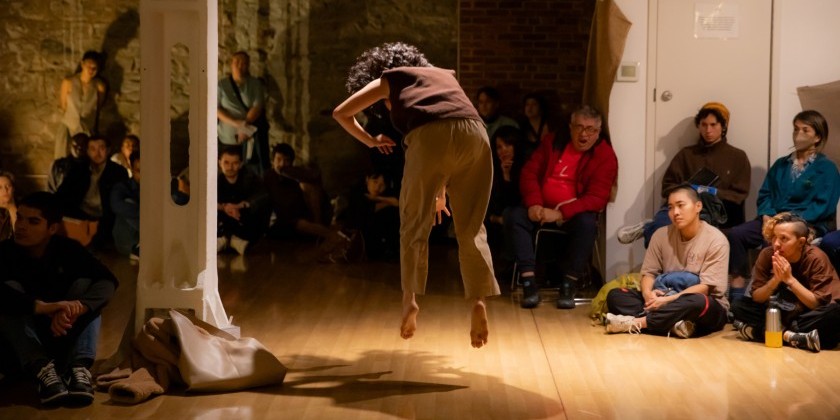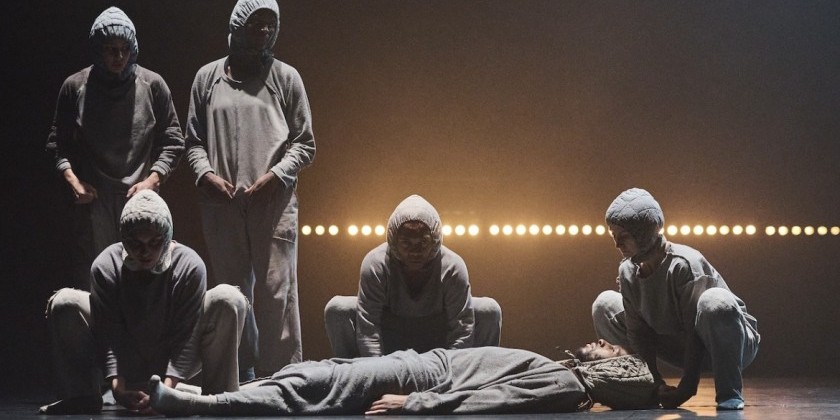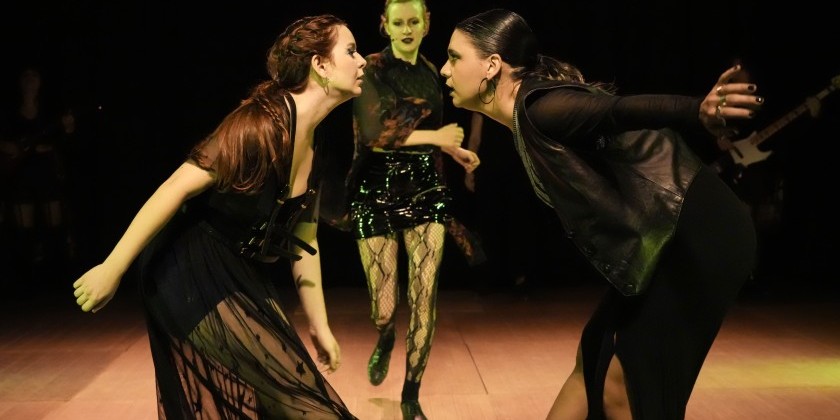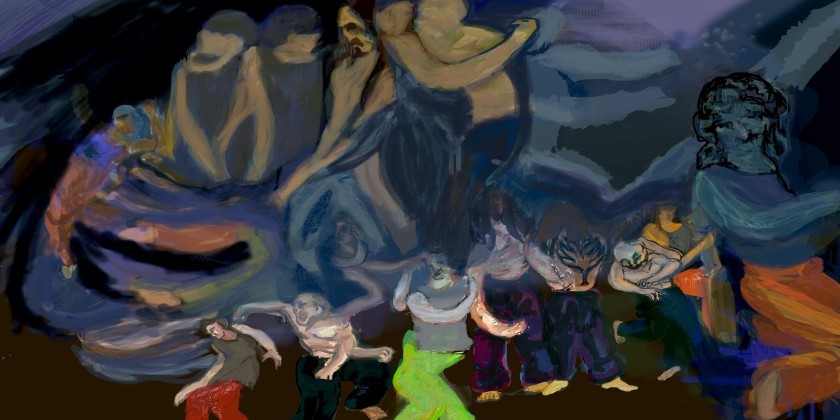AUDIENCE REVIEW: Illinoise
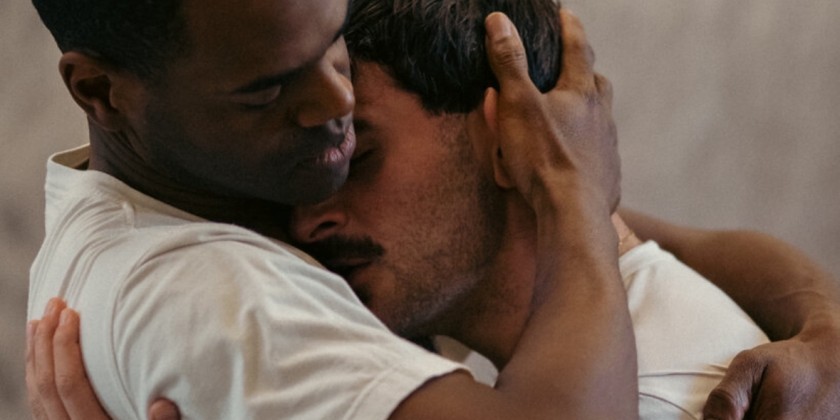
Company:
Justin Peck
Performance Date:
March 4th, 2024
Freeform Review:
Peck's "Illinoise": Pathos At Its Most Pathetic
The Predatory Wasp of the Industry of Inertia in Arts Funding Is Out to Get Us... AHHHHHHHH!
written by Sven Britt (Ex-Fiancée). Illinoise plays at Park Avenue Armory through March 26th (though it appears to be sold out). Sven saw it on March 4th. This is being published on March 7th—opening night. Merde.
i should have liked this show. i should have loved this show.
i started making music because of Sufjan. long before he came out of the closet—in a way as devastating as his music should have prepared me for—i did what so many other closeted queers who grew up in the church did. i found myself inside of Sufjan’s music.
the delicacy and vulnerability. the intentionality of every aspect of writing and production, from the strikingly minimalist to the astonishingly maximalist. the lyrics that were occasionally overly-erudite while being rooted deeply in an emotionality based on ethos (vs pathos—more on that later). to this day, i cite “The Predatory Wasp of the Palisades Is Out to Get Us!” as my favorite song of all time. i’ve got two Sufjan tattoos. i’ve met the man multiple times, having spent years composing, producing, and performing as one-half of an electronic soul duo with a frequent collaborator of his.
but it’s not just the music that indicates that i should have loved this show—i was always supposed to be a dancer. i’m 6’2” with beautiful feet and flat span. but my parents weren’t equipped to know that my natural rotation meant that i should’ve been taking ballet.
sports were easier. more accessible. and, sure, less gay. (kind of… trying to sport-the-gay-away, in my case, backfired hilariously—after all, i ended up spending a not-insignificant amount of time in locker rooms surrounded by boys in jockstraps.)
//
as an adult, i began taking dance classes after falling in love with immersive dance-theatre. i met my now-husband when i accidentally took his dance class (he was a last-minute substitute for a teacher i’d been following for months, and when his class ended up being orders of magnitude more difficult, i clammed up to the point that he thought i was a foreign exchange student—a story for a different time).
i went on to accompany his technique classes at MMDG, Peridance, and Gibney (REMINDER to BOYCOTT, March 11–17 [at least]). i composed and performed music for his dance and immersive work at venues like La MaMa, Danspace, Fengchao Theatre (Beijing), and—most recently—the Brooklyn Academy of Music. for the dance company, i’m the Treasurer & Secretary, lead grant writer, and cinematographer.
he even directed my solo album—using the same task-based generative tactics he uses for the creation of movement material to instruct the way i build my music, which tasks were carefully derived from the conceptual precipice of the album, ensuring greater connectivity between intention and craft. that album, A Feast That Never Comes, now has an accompanying dance film which has been selected/awarded at 700+ film festivals worldwide, and we are in pre-production for a live performance that blends music, dance, theatre, and film.
that should be enough context for you to believe me when i say, i was excited—i should have been ecstatic—to see Sufjan’s Illinoise reimagined for the stage. an album i hold so dear, with musicality that richly evokes varying responses from performer and audience alike… and that’s important to me, because of my dedication to creating art that is interrogative rather than declarative—and part of the making of work that is radically inclusive by choosing not to function as dictatorial in its viewpoint is the careful construction of environments that not only invite, but encourage disparate and differing responses from diverse audiences. and that’s just what Sufjan did in the album.
//
alas. it’s bad. story ballet doesn’t tend to support disparate readings of events (although i should note that the story is unclear-at-best in this production, so, in this case, i suppose it’s possible that everyone walked away with individualized understandings of the “story”).
as an example: watching two twinks perform a pas de deux while hearing the lyrics “Stephen A. Douglas was a great debater / but Abraham Lincoln was the great emancipator” doesn’t inspire confidence in directorial awareness of how lyrical content is—even when it is at its most elusively poetic—axiomatic. a word means a thing (but don’t worry; i’m not a prescriptivist). lyrically-driven music demands a different approach to the creation of dance than, say, traditional scores for story ballets. this is especially true of narrative dance. but for this show, the failings weren’t always tethered to the disconnect between choreography and lyric.
one of the (many) moments that elicited nearly-supersonic eye rolling didn’t even have all that much to do with the choreography. i’d greatly appreciate it if someone could explain to me why we were walloped over the head with signs reading (i didn’t have time to absorb all the names, in the moment’s absurdity), “Jerry Falwell,” “Ronald Reagan,” “Andrew Jackson” (actually, this last one makes sense, as he’s name-dropped in the album).
there was also the use of dancers-as-car-headlights and a-literal-steering-wheel-being-held, as if we don’t know they will drive to Chicago, all things go, all things go—the production only sometimes manages to understand that dance is not axiomatic. but when it compensates for movement’s inherent lack of clarity, it unfortunately cheapens the show by expecting (demanding?) the audience to relate to the coercive choreographic pathos being performed, while clearly not thinking that the very same audience could possibly understand anything about automotive transportation (or homophobia) without clear axiomatic cues.
//
but before i make it sound like this is all just sour grapes, let me make clear: the music is incredible. not just the compositions, but the performances as well—HUGE shoutout to the entire band, but i must highlight Elijah Lions in particular (can i get a recording of every Sufjan record, but sung by you…?), as well as Timo Andres’s astonishing orchestrations and arrangement work (thank you, dear, for drawing on the touring vs album orchestration during the interludes for Predatory Wasp). and, naturally, Shara Nova is consistently a revelation.
i could (and perhaps should) spend more time talking about how incredible the music is. but, alas. there’s not much more i can say in any kind of interesting way about how good it is. i hope they record these arrangements and release them, so this treatment of Sufjan’s material is not only available to people who either lucked into cheap tickets or else could afford to shell out $100+.
for now, we must move on to the other aspects of the show.
//
the choreography oscillates between the worst tropes of Competition Dance™ (i.e., uninspired movement that is clearly defined and divided by the tenets of the oppressive aesthetics of contemporary ballet) and the worst tropes of So You Think You Should Dance™ (i.e., movement that uses the former tricks to ensnare the witness and—in conjunction with music—exploit rather than invite their emotions, convincing them that they really feel something, and that this all means so much).
N.B.: several of the dancers are SYTYCD alums. i believe it’s important for me to note that i blame the choreography and direction for this fault of the show, not the performers themselves—though, yes… the commercialization of pathos in dance is an incessant problem in the culture that i fear the performers may have deeply embodied by this point, regardless of explicit direction.
this is one of the key problems with the work. the movement is steeped in pathos, which is warring against Sufjan’s score, which is rich in ethos. i’ll admit that i can sometimes be a bit of a SNOOT when it comes to language, but trust me that when i break out these definitions (American Heritage), it’s worth following my logic here (see how i didn’t even take the easy route and use that sentence to loop in logos?).
//
- pathos — A quality, as of an experience or a work of art, that arouses feelings of pity, sympathy, tenderness, or sorrow.
pity is a tricky word here, given Sufjan’s horrifying recent experiences. Peck claims the piece is not biographical… but you don’t put a twunk in a baseball cap when you’re making a Sufjan Stevens musical without some intention (there are other somewhat-alarming ways that this claim of non-biography irk me, but i’ll leave it there).
in a note about “pity” and its synonyms, the American Heritage Dictionary (never leave home without it) has this to say:
- Pity often implies a feeling of sorrow that inclines one to help or to show mercy. The word usually suggests that the person feeling pity is better off or in a superior position to the person who is the object of pity.
do i have to explicate the moral and ethical problems raised by steeping a work in this kind of pity? the audience is made superior but can take no action. and one could argue that treating source material through a lens of pathos demands that the re-interpreter must necessarily see themselves as superior, in order to externalize (in the crudest, most cloying way) the suffering they seek to surface from the source material.
which brings us to another approach, and one that i think Sufjan has mastered over the years. (stay tuned for a note on the Greek comment.)
- ethos — The disposition, character, or fundamental values peculiar to a specific person, people, culture, or movement: "They cultivated a subversive alternative ethos” (Anthony Burgess).
[Greek ethos, character; see s(w)e- in the Appendix of Indo-European roots.]
you can think of this as world-building, but world-reflecting might be a more accurate way to phrase it. the music establishes an ethos that is—somehow!—entirely fleshed out in its own right, while nonetheless inviting individual emotions from listeners. the music can sound joyous (and, in fact, be joyous) for some, while others are weeping over the lyrics, and the reverse is true as well (i’ll spare you the examples, as this is getting long).
it’s that malleability of the emotional content of the music that stands in such stark contrast to this production, which is chock full of soap-opera-but-worse tactics to coerce the audience to feel one particular kind of way.
and here’s the promised note on the Greek. pathos—suffering. there’s some etymological ties to grief, as well, but it’s more-or-less straightforward. ethos, on the other hand, gives us so much more to examine in the etymological root.
- s(w)e- — Pronoun of the third person and reflexive (referring back to the subject of the sentence); further appearing in various forms referring to the social group as an entity, "(we our-)selves."
i mean, come on. the social group as an entity. my understanding of ethos as it appears in art can be found somewhere in here (and probably deserves it’s own post). the social group is an entity, but it doesn’t erase the individual. it embraces the individual. it allows and encourages individual stories and experiences to come to the surface—in stark contrast to how pathos coerces responses.
the murkiness of the story makes this problem worse—art that seeks to dictate emotional responses can only really work if the form is axiomatic. and while the SYTYCD-ification of dance is bringing us ever closer to knowing that this tombé coupé jeté, performed exactly so, means “my lover has just left me,” i still posit that language doesn’t have a substitute or analog—a creator electing to dictate how an audience should respond (in any art form, but especially one that is not axiomatic) is a crude practice done with blunt instruments.
the last time someone told me how to feel in real life, i lost a friend. or, depending on your perspective, they lost a friend. but maybe people are just addicted to abusive relationships. maybe everybody wants to be told how to feel. i guess it makes things easier… if the tactics are slippery enough that you don’t catch what’s happening.
//
i got tickets early, for a preview show at $45 a piece (“preview,” after a run at Bard and in Chicago, seems like a way to account for potential technical issues, rather than establish that they may decide overnight to make any major changes to the show—hence my comfortability in publishing this after seeing “only” a preview). the cheapest seating tier had very few seats to begin with (i tried to remember the dividing lines between pricing tiers while looking at the seating chart, but i’ll reserve my estimation, as it would be only that). this run at Park Ave Armory is now shown online as sold out, but when i checked a while before it sold out, all of the tickets were $100+.
which brings me to funding. this is already long, so i’m not going to list all of the funders—not that it would do much good, as there are several individual names listed, which hamstrings any ability to ascertain how much money came from where. similarly, looking at Bard College’s financials isn’t helpful—their surplus in the tens of millions doesn’t necessarily mean that the money was available to the Fisher Center’s artistic programming (one or two dense conversation for a different time).
let’s briefly address some points of hilarity about what this show tells us about the state of arts funding. Bard is a rich school (their most recent 990 filing showed a surplus(!!) of more than $72 million). Peck—who was wildly successful even before his Tony, Drama Desk, Bessie, etc.—was just coming off choreographing Spielberg’s West Side Story (he also choreographed Cooper’s Maestro). the co-commission list for Illinoise is impressive (six organizations!), even before you get to further funding (which is where you find various individuals—as mentioned above—as well as producers, foundations that don’t accept unsolicited requests [democracy dies in darkness and nepotism], and granting organizations of varying sizes—more on that below).
all of which is to say, this show was funded terribly well. commissioning institutions, granting organizations, family funds, individuals, producers, etc.
and as i sat in the Armory, i couldn’t help but wonder… why. not why it has some of this support—a big name in choreography, the indie music darling to end all indie music darlings, plus the lowest-common-denominator SYTYCD pathos stylings built for easy commercialization… by all estimations, this show is as safe a bet for a producer as anything going to Broadway nowadays (which, it’s worth noting, seems to be what this production is eyeing).
maybe it’s silly for me to think that granting organizations should… perhaps… prioritize funding work that doesn’t have both massive institutional support and the critical and public draw to guarantee ticket sales—which promise/expectation of ticket sales is one way to get investors to join the work as producers. producers rightfully want a return on their investment. so… why is it that funding for nonprofit organizations is being given to support work that is so clearly for-profit?
i don’t know what the answer is, but i know that when i see work that is—for better or worse—commercially viable and potentially capable of running for long enough to make a profit (at least much more so than the vast majority of dance work), and is also stacked with support from nonprofit and for-profit funding solutions alike, i wonder what the hell we’re all doing out here. why, i beg of you, is this production receiving the in-comparison pittance of funding from the Harkness Foundation for Dance (which grants average $2,500, and rarely exceed $5,000)?
what sort of inventive, challenging work could have been made with that money by creators who are starving for funding and spending countless hours applying for minuscule grants that regularly go to those who already have significant support? am i meant to believe that this show succeeds or fails based on a grant of that size?
looking at the—let’s just say it—rich companies that receive so many of these grants, am i meant to believe that those of us who make work without extant support are simply incapable of receiving funding, even from an organization like Harkness that claims to be dedicated to “invigorating” the dance art form in NYC? (this is a serious question: is this production invigorating the dance art form? even if your answer is yes [you’re wrong, but we can set that aside], is a show that was built in New Jersey and shown first in Chicago invigorating the NYC dance art form?)
am i meant to believe that dance work that pushes past the commercially-viable—even if created with clear craft, intention, and purpose… even if made to invigorate the dance form through meaningful, impactful engagement and support of the dance community—is destined to be un- or underfunded, as we witness the most-well-funded behemoths of the arts continue to grab pennies from supporting organizations that could choose to elevate the next generation of artists?
i hope not. i hope for better.
but this is where i leave you. i’ll write more at some point. but for now, i’ve gotta get back to writing grant applications. because i hope for better. for now.
Author:
Sven Britt (Ex-Fiancée)
Website:
https://www.chrismastersdance.org/
Photo Credit:
Sasha Arutyunova






